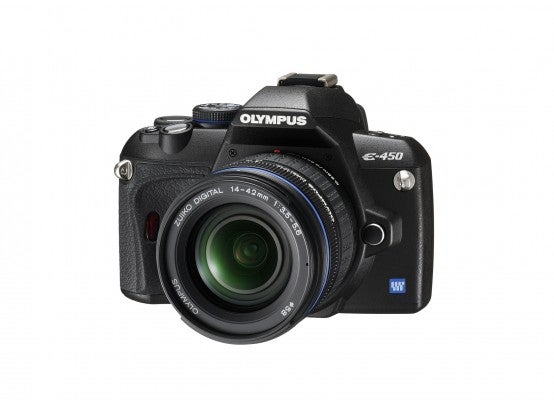Is the Olympus E-450 just a minor refresh or a feature-filled model worth considering? What Digital Camera reviews the latest entry-level DSLR in the Four Thirds system.
Olympus E-450 Review
Olympus E-450 performance & value
Olympus has worked hard at live view since the feature first appeared on the E-330, and with a variety of focusing and display options you can tailor it to your way of shooting. The contrast detect system is well-paced and with the kit lens operates fairly discretely – naturally this slows down a touch in low light but it is still usable. I had the Zuiko 12-60mm f/2.8-4 SWD lens to hand during the review, which showed a marked improvement in speed over non-SWD lenses when used for live-view focusing. It’s only in lower lighting conditions that the system can be difficult to work with, given the low resolution of the LCD screen and the lagging that slows down the feed.
Lower light also presents a problem for the standard three-point focusing system, which can sometimes hesitate to confirm correct focus; again, this is where the SWD optic shines, although its £850 price tag will no doubt make it out of reach for the average entry-level user. Otherwise the focusing system is fine in general use, even if it isn’t the fastest among its peers.
Although the viewfinder is a little small compared to cameras with APS-C format sensors, when shooting without my glasses I could get up close and view both the frame and shooting information clearly. Given the aspect ratio of the sensor it makes more sense to have the exposure informtaion displayed along the side of the frame as opposed to the bottom (the latter being the case of the E-620 and E-30), although this does force you to read it from top to bottom and not left to right, which can be annoying.
The size of the buffer is roughly on a par with comparable cameras, and I managed to shoot the promised eight Raw frames onto a Lexar 4GB 133x speed CF card before the camera slowed down. The finest quality JPEGs extended this to to 12, while a capture of the two notched up six frames at a constant pace. On such a card this burst of Raw files cleared in just over four seconds, with the JPEGs managing a similar speed, while a combination of the two increased this to nine. Although the camera doesn’t support UDMA flash cards – which at this price point is expected – there are faster cards available which may quicken this pace.
When I was out shooting I suspected there were some issues with the accuracy of the white balance system, but looking at images later on a calibrated monitor, and comparing them to those displayed on the camera’s LCD screen, it appeared the camera’s LCD screen was out of line. Images shot in daylight appeared fine, but in more subdued light or in any overcast conditions they appeared rather cold on the camera.
Value
Currently, both body-only and kit options retail for around £75 more than the E-420, which, given the marginal difference between the two, seems a little too expensive. As the E-420 gets phased out the E-450 should drop to a more reasonable £350 asking price.








